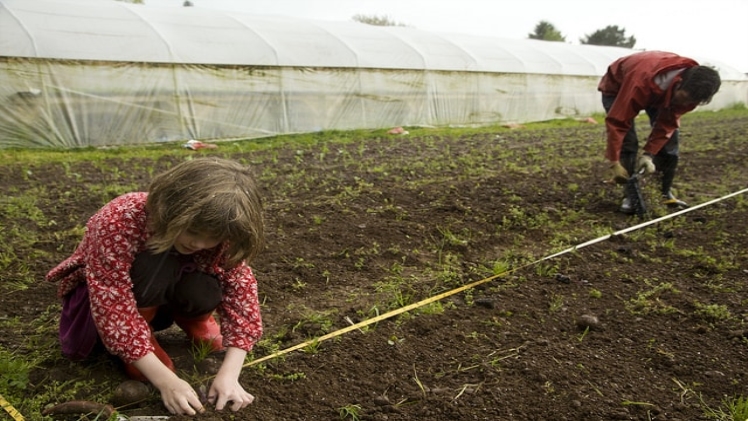Soil health and fertility defined (see www.nrcs.usda.gov/wps/portal/nrcs/main/soils/health/, and soilhealth.cals.cornell.edu/) a) “Soil health” and “soil quality” can be used interchangeably. They are: The capacity of a soil to function, within land use and ecosystem boundaries, to sustain biological productivity, maintain environmental quality, and promote plant, animal, and human health (Doran and Parkin 1994). b) Soil fertility is a feature of soil health as applied to agroecosystems.
It is the capacity of a soil to provide nutrients required by plants for growth. c) Soil health is established through the interactions of soil’s physical, chemical, and biological, properties (see more at Supplement 1, A Soil Primer with Sustainable Management Strategies, and Part 2, Applied Soil Science) i.
Physical properties include soil texture, a physical measurement of the percent of sand, silt, and clay; and soil structure, the arrangement of individual soil particles (sand, silt, clay) into aggregates or “clumps” ii.
Chemical properties of a soil measure its nutrient-carrying capacity and pH (acidity) iii. Biological properties refer to the community of soil organisms (principally bacteria, fungi, and actinomycetes) d) Soil health indicators (see soilhealth.cals.cornell.edu/) i. Soil provides adequate levels of macro- and micronutrients to plants and soil microbes.
This reflects the ability of the soil to mineralize nutrients and a moderate pH (~6.0–7.0) that allows the nutrients to be both held in the soil and available to plants as needed. ii. Soil has good “tilth.” This includes a good structure that resists degradation (e.g., erosion and compaction), provides adequate aeration and rapid water infiltration, and accepts, holds, and releases water to plants and groundwater.
iii. Soil promotes good root growth and maintains good biotic habitat that sustains high and diverse populations of beneficial organisms and low populations of pests and pathogens iv. Soil has low salinity levels and low levels of potentially toxic elements (e.g., boron, manganese, and aluminum) v.
You will need to know about: besthealthnews.
Check out this site: theinteriorstyle to get more information
last Speech
Soil has high resilience and is able to withstand deleterious events, such as drought and flooding 2. Soil fertility, plant health, and the resistance and resilience of crop plants to pest and pathogens a) Soil fertility requires a balance of critical plant nutrients. Either a deficiency or an excess of nutrients can adversely affect plant growth, susceptibility to pests and pathogens, and post-harvest quality.
Visit this site: to get all categories latest movies.

